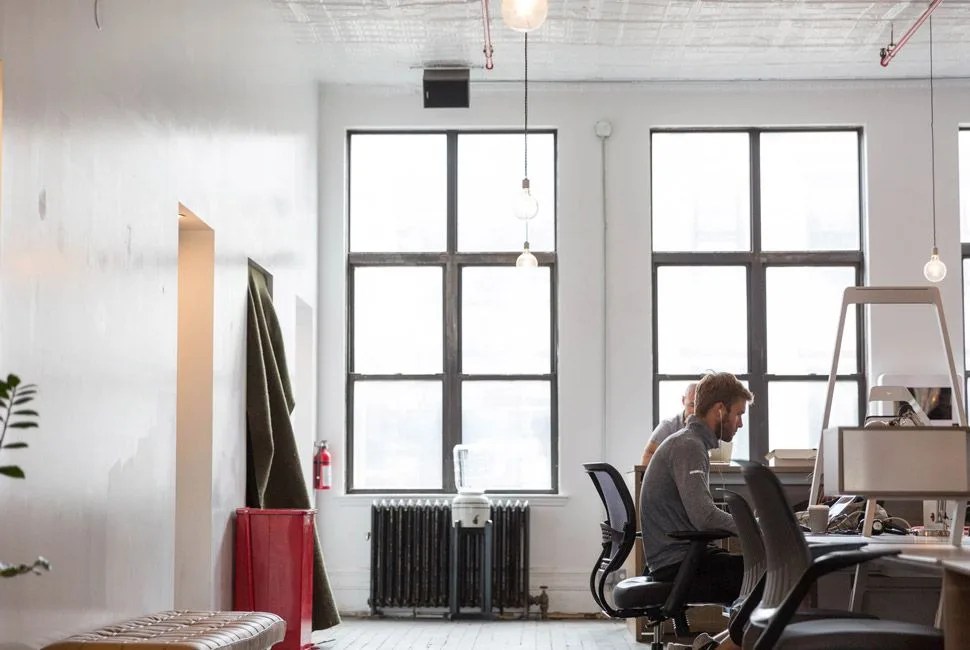New York City is a sanctuary for small startup companies and progressive thinkers. And Projective Space has capitalized on just that. The shared workspace has helped such prominent tech startups as Maven, Buffer, Stripe and Uber all grow roots before making it in the big time. However when we visited Projective Space, which is located on one sparse floor of a building in the Lower East Side, the place was admittedly underwhelming — but that’s all by design. We sat down with Johnny and James Wahba, two of the three cofounders of Projective Space, to ask them about the rise of coworking, how their space encourages collaboration, and why burgeoning startups should jump at the chance to work in a shared workspace.
Q. Can you tell us about the origins of Projective Space?
James Wahba (JA). When we launched in 2011, it was really just to solve our own need. We wanted to work amongst entrepreneurs who were inspiring. We wanted it to be a collaborative space where we could feel comfortable asking others questions about trying to figure out our own problems.
Johnny Wahba (JO). Five years ago was the early days for the term “coworking.” If you were to ask people, “What is coworking?” most would be have no idea. Others may have read about it and thought it was super deep in the tech world. But at that time, [with coworking], people would rent desks or work out of spaces that were within existing businesses. There were no pure-pay coworking spaces at that point.
JA. Well there were office suites. Regus had just been around, but they were really just renting out small rooms. They didn’t have an open plan. And the way we approached coworking, instead of posting it on Craigslist — like “Hey I have a desk for rent, we’ll give it to the first person who responds” — we wanted to have an application process. We wanted to make sure that everybody who joined was actually a good fit.
First, it starts with creating a good group of people to work in the space. If you don’t have people who share the same values, ideas and drive…then it’s going to be hard to get them to connect.
JO. One thing was, we were pretty clear that we wanted to have existing businesses. I mean, there are two ways to run a shared workspace. If you promote it like Craigslist, you become a commodity when you’re selling space. And you’re really not able to create a community, which is a value to the community. You’re just filling seats with anyone with a check book.


